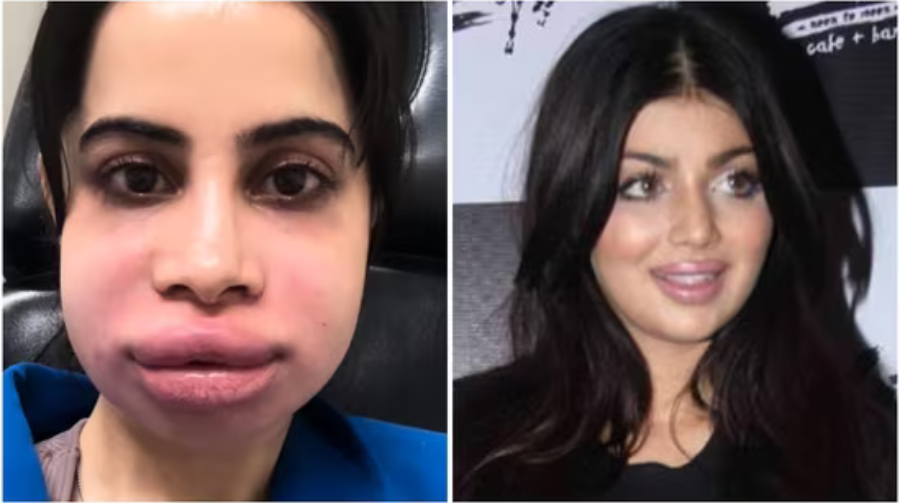Health & Wellness
Celebrity Filler Craze: What’s Real and What’s Not? Aesthetic Expert Breaks It Down
From red carpet transformations to casual selfies that look too good to be true — the era of celebrity fillers is in full swing. But how much of it is natural beauty, and how much is the art of injectables? We decode what’s fact, what’s filtered, and what the experts really think.

Why Fillers Are Trending Like Never Before
Just scroll through Instagram or spot a before-and-after paparazzi click — and the difference is hard to miss. Defined cheekbones, plump lips, sharper jawlines — it’s not always genetics.
So why are fillers booming?
According to Dr. Meher Sharma, a Mumbai-based celebrity aesthetic dermatologist, “Fillers are the fastest route to subtle transformation. No surgery, no scars — just 20 minutes and you’re red carpet-ready.”
It’s the instant gratification plus the fact that results are temporary, which makes fillers super attractive. Celebrities don’t have to commit for life — they can tweak, top-up, or dissolve anytime.
What Kind of Fillers Do Celebrities Get?
Here are the top 5 filler procedures popular in both Hollywood and Bollywood:
- Lip Fillers: Adds volume and shape. Think Kylie Jenner or Janhvi Kapoor’s sudden lip definition.
- Cheek Fillers: Lift sagging or flat cheeks for that sculpted, model-like look.
- Jawline Fillers: Sharpen and lengthen the jaw — especially popular among male stars.
- Tear Trough Fillers: Reduce the appearance of dark circles or hollowness under the eyes.
- Chin Fillers: Improve facial symmetry by enhancing chin projection.
In India, cosmetic dermatology is often under wraps — but social media detectives aren’t fooled. Pages like “@celebface” highlight subtle (and not-so-subtle) tweaks that celebs undergo.
Real Talk: What’s Natural vs What’s Touched-Up?
Let’s bust a myth — not all celebrities are surgically enhanced, but many get minor filler tweaks to stay “camera perfect.”
So how do you tell? The best fillers are the ones you can’t see,” says Dr. Meher. “If someone looks fresh, youthful, and symmetrical — without looking fake — that’s usually good filler work.
Here are some signs that fillers might be at play:
- Lips look swollen and slightly stiff
- Cheeks are puffy even when smiling
- Nose bridge appears unnaturally high (non-surgical nose job)
- Lack of fine lines, but limited facial expression
But many A-listers use micro-doses, known as “Baby Botox” or “Skin Boosters,” which give that glassy skin glow without dramatically altering features.
The “Overfilled Face” Phenomenon
Too much of a good thing? Absolutely.
The term “filler fatigue” or “pillow face” describes what happens when people (celebs included) overdo injectables:
- Facial distortion
- Puffy, unnatural skin
- Plastic-like expressions
- Loss of individual facial charm
Even celebs like Courteney Cox, Simon Cowell, and Blac Chyna have admitted to reversing their fillers. You get to a point where people stop recognizing you. That’s when you know it’s time to scale back,” Courteney said in a candid interview.
Are Filters Making Us All Filler-Hungry?
Instagram filters, TikTok face effects, and Snapchat’s smooth skin lens are creating a dangerous beauty standard.
Filtered images:
- Slim the nose
- Plump the lips
- Add glow and symmetry
- Smooth out any texture
This pushes even celebrities to replicate these digital looks in real life — via fillers. It’s the Snapchat dysmorphia in full effect. We see patients bringing filtered selfies and saying, ‘I want to look like this,’” shares Dr. Meher. “That’s a red flag. No one looks like that in real life.
What Are Fillers Actually Made Of?
Most modern fillers are made of hyaluronic acid (HA) — a substance that occurs naturally in the body and retains moisture.
- Popular brands: Juvederm, Restylane, Belotero
- Duration: 6 to 18 months
- Reversible? Yes — an enzyme called hyaluronidase can dissolve it if needed
Other types (for longer effects) include calcium hydroxylapatite (Radiesse) or poly-L-lactic acid (Sculptra) — but these are used more cautiously.
Is It Safe?
Yes — if done right. Fillers are minimally invasive but carry risks when:
- Injected by unqualified professionals
- Done in unsafe or unhygienic conditions
- Overused for drastic changes
Complications can include:
- Bruising or swelling
- Lumps or asymmetry
- Vascular occlusion (when filler blocks blood flow — rare, but serious) Always choose a certified dermatologist or plastic surgeon,” warns Dr. Meher. “A bad filler job isn’t just aesthetic — it can be medically risky.